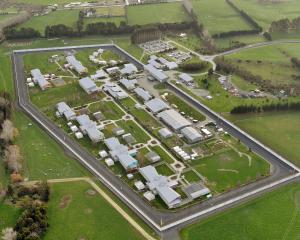
Several recent events have served to highlight the growing importance of Dunedin's links with the hinterland.
These include the big attendance requirements of the proposed Dunedin stadium, the proposed Chinese mining trail, the huge wind farms alongside the historic Dunstan gold coach route, and remarkable change in residential population distribution, with recent growth concentrated in the Central Otago/Queenstown Lakes districts.
But other factors have changed too: the decline in Dunedin's functions related to farming and forestry and employment-intensive manufacturing; and the dramatic rise of the university as the dominant factor in Dunedin's economy.
While the visitor industry has expanded noticeably in Dunedin with the further enhancement of its peninsula marine wildlife attractions, museum and cultural asset additions, and the promise of an imaginative ecological sanctuary at Orokonui, in Central Otago a major new wine growing industry has emerged.
Present commercial accommodation guest night figures in the city rank only about one third of those in Queenstown.
The inland airport boasts similar passenger numbers to those registered at the Dunedin International Airport.
This is despite the Central Otago/Queenstown Lakes residential population being a third of that in and around the city.
The inland district has captured Otago and Southland's entire net residential population increase of the past 25 years.
Present conservative projections suggest a similar pattern over the next 25.
I believe it is time to review the transport linkages between Dunedin and Central Otago.
With no rail, and sparse air linkages, the present system of state highways provides sole access.
Both the State Highway 85 (via Palmerston and Ranfurly) and SH 8 (via Milton and Alexandra) are considerably longer than the historic gold coach route.
SH 87 (via Outram and Middlemarch) has been upgraded but is still longer than the gold coach route.
Winter snowfalls on the Central Otago uplands provided a key impediment to serious investigations about 40 years ago.
But improved roading technology gains for places such as the Lindis Pass and Crown Range demonstrate room for review today.
Valuable community assets have been invested in Dunedin.
Its continued economic viability in the next few decades necessitates a fundamental rethink.
The closure of major employment-intensive manufacturing enterprises in the city has continued unabated since World War 2.
The city's former close links with the farming community have also receded.
These include stock and station agency firms, wool exchange, and summer and winter pastoral shows.
The city has also failed to secure added-value processing of the growing forestry sector.
The dramatic boost in dairying has certainly helped the fine container port facility at Port Chalmers, but the city has little connection with the farm sector as a whole today.
The fortuitous advance of the University of Otago over the past 3 decades, now the increasingly dominant social and economic element of the city, seems unlikely to continue with this rate of expansion.
The big ratio of students that come from beyond Otago and Southland now have more tertiary education choice further north.
Its excellence in research activity might be further advanced with closer links to the Central Otago/Queenstown Lakes districts - including applied computer science and environmental satellite schools.
Much interest has been generated by the expanding tourism/visitor sector in the past few decades.
Dunedin could enhance its prospects by having closer links to the nearby Central Otago/Queenstown Lakes districts.
Much of the recent growth in the Lakes district has come with lifestyle settlement and many of the newcomers are quite wealthy.
For some time now I have been advocating a new chapter of transport that would better capitalise on our fine succession of distinctive landscapes in Otago, this land of contrast.
A clue to this interest can be seen in the popularity of the Taieri Gorge Railway and the Central Otago Rail Trail.
Travellers value highly what they see on the journey.
I would like to see a serious investigation into a modern monorail linkage between the city and Central Otago - a pioneering introduction that could in due course be expanded to a South Island-wide network, linking its key tourism centres.
This could be a major new tourism asset and launch a new and exciting chapter in the industry with benefits to Otago residents and visitors alike.
This new linkage would be environmentally friendly and much more carbon-neutral than the many private motoring trips made now.
It would also leave the present highways free for larger commercial traffic.
Queenstown and its surrounding peri-urban settlements is destined to become the first inland city in the South Island.
Where will Dunedin fit into that picture? More than a century ago a visionary railway was built to link a much smaller Central Otago to the city.
Such an enterprise today, with the somewhat ponderous provisions of the Resource Management Act to overcome, will take years to complete.
The time to start is now.
As a former Dunedin City Councillor, I think the time is ripe for a major rethink of these strategic issues: provincial connections and sustainable, environmentally-friendly development.
Jolyon Manning is a former chief executive of the Otago Council.










